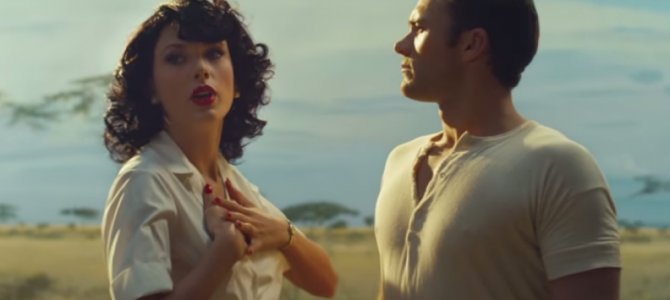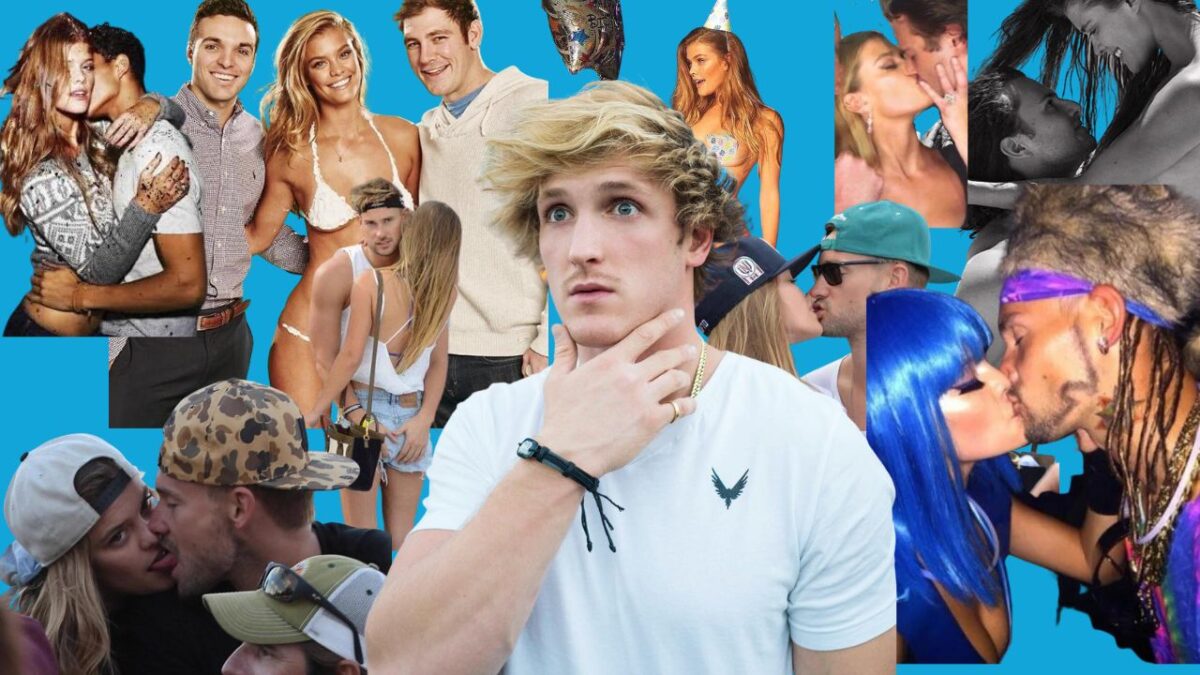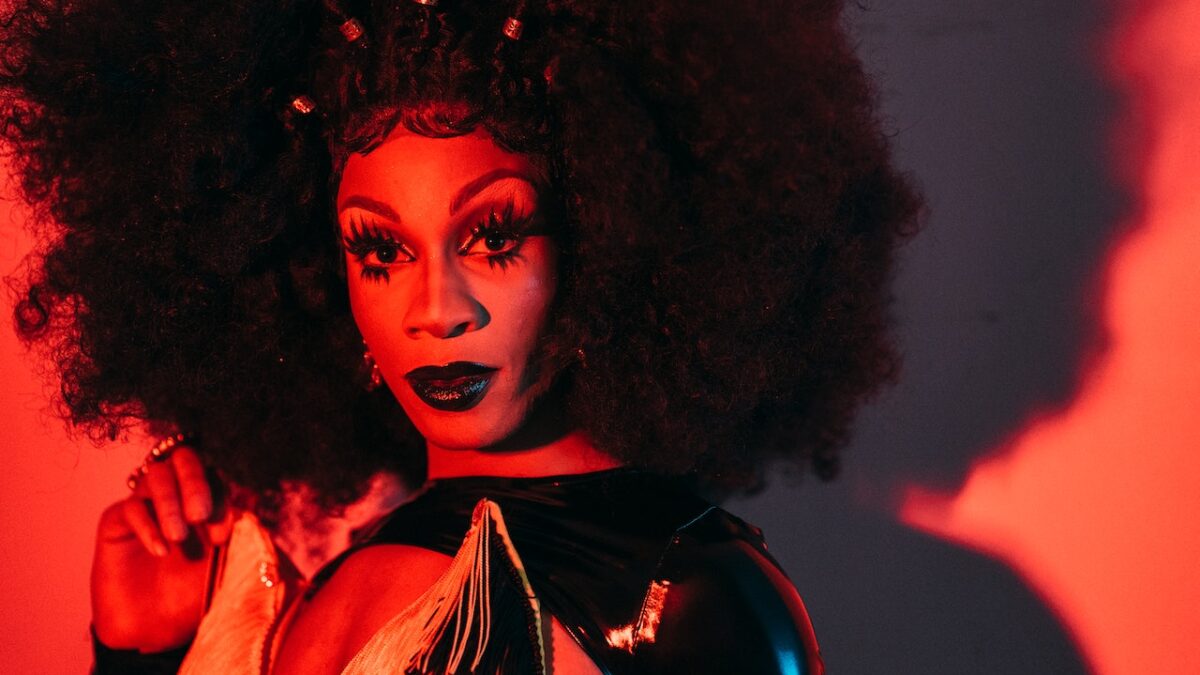
The newsrooms are busy with sex and gender these days: Kim Davis’s shocking imprisonment, a new Planned Parenthood sting video, the founder of the gay-rights behemoth Human Rights Campaign buying off and “disappearing” a teenage boy-witness to beat a child-sex-abuse charge, and a walkout of hundreds of Missouri students to protest a boy in a dress wanting full access to female locker rooms.
But people forgot the truly most telling story of the last week. Taylor Swift’s new video “Wildest Dreams” came out, and she’s gone brunette. In less than a week, just one of its multiple YouTube versions was closing in on 30 million hits. Now it’s at 56 million. This is the big news we should all be talking about.
Why? Look at Swift’s choices and you will get a sense of what’s really brewing in the minds of Americans. Sporting chocolate-colored locks and a dazzling array of late-1940s Hollywood ensembles, hinting vaguely at Ida Lupino crossed with Joan Crawford, the usually blonde bombshell rolls on savannah grasslands with yawning lions, flies over frolicking African wildlife in a propeller plane, then poses in a silvery Lauren Bacall glitter gown while an old-fashioned bulb flashes in her eye.
Please, Can We Get Back to Normal?
Yes, there’s some boilerplate mixed in there about a leading man with stubble and a generically handsome profile, winning the starlet’s love in the meadows of Africa and then breaking her heart when they return to Los Angeles, but whatever. It isn’t a Taylor Swift video without an unconvincing romantic pretext to occasion chances for us to fawn over her titillating cheekbones, blood-red lips, and girl-next-door femininity. Her career is exploding, and “Wildest Dreams” is sure to add more fuel to the explosion.
In light of all the debates about transgenderism, gay marriage, abortion, “war on women” memes, third-party reproduction, and whether it’s okay to call Rosie O’Donnell a fat slob, allow me to hazard a guess as to why Swift seems to be emerging as the true voice of the next generation (pace Lena Dunham).
It’s not just Kim Davis. We have had enough. By “we” I mean everyone on Earth. We are sick of hearing about men who don’t love women, women who hate men, women who use men, men who use women, women who want babies without being impregnated by a man, men who want babies without impregnating a woman, men who want to be women, women who want to be men, women who want to kill the babies they conceived with men, and men who want women to kill their babies and sell them to man-hating abortion conglomerates who then resell them to organ-trafficking firms headed by lesbians who then resell them to universities that spend lavish federal funding on women’s studies and gender-studies programs that fill millions of college students with more of these self-destructive absurd theories about manhood and womanhood.
When Men and Women Needed Each Other
We want John and Abigail Adams—a man and woman to change the world by truly working together and siring children through love, then raising and educating them. We can’t get back to the eighteenth century, so the closest we have is the late 1940s. Ergo, Taylor Swift’s wildest dreams.
We want to go back to a time when men needed women and women needed men. By this, I mean a time when the question wasn’t whether men wanted women or women wanted men, but rather their mutual necessity. Wanting is a frivolous act that comes and goes with the wind. (Exhibit X: suddenly Tatum O’Neal has abandoned men and become Rosie O’Donnell’s troubled brood’s next notorious stepmom.) Needing is an innate human inclination that bestows dignity on another person. If someone wants me, I am an object. If someone needs me, I am dignified; I hold something irreplaceable.
Women hate it when they aren’t needed. Men hate it, too. Perhaps we are learning now, the hard way, that they need their sexes to be needed in addition to their individual personalities. The irreplaceability of our gender turns out to be something that humans cannot surrender lightly. Hence, people are rebelling.
We know now that things in 1949 weren’t perfect, by any means. But we also know that in 1949 people weren’t thrown in jail for refusing to call a sexual relationship between two men a marriage, and 20-year-olds did not need “consent laws” to tell them when it would be okay to have sex with each other.
In 1949, for all its racial segregation and supposedly unhappy housewives enslaved by pot roasts and girdles, many men could come home from a long day at work and count on being greeted by a loving woman and kids. Many women in such homes could rest assured that they could wait until lights out and get some good old-fashioned lovemaking. It was a husband’s duty to “cut the mustard.” Women were nudged by the sexual mores of a tasteful society to be patient even when they were tempted to blow up and throw things. In the end, the little sacrifices added up to something precious: a home.
The common retort from liberals is, “But remember how bad things were for minorities and women then.” To which I say: how many women are frustrated with their sex lives today, lonely, and on antidepressants? And how many buildings in Ferguson and Baltimore were set on fire? Maybe we shouldn’t condescend by assuming that everything that came later was better than what came before. Swift’s production team may be on to something.
Taylor Swift Is Safe for Boys and Girls
There are no homes without sexual difference, because once you carve out a domestic space based on the presumption that men and women don’t need each other, the delicate web of mutual obligations and sacrifices breaks down. The line of sexual difference is the most basic border that we must cross in social negotiation, which we witnessed as we observed our parents’ generation dividing domestic tasks when we were toddlers.
When I drop my daughter off and pick her up from school, Swift’s face seems to be plastered everywhere, on T-shirts, backpacks, and notebooks. She’s “okay” for the girls and the boys equally, a figure that children can emulate and parents aren’t completely alarmed about. The somewhat unexceptional facial structure of Swift’s angelic face leads me, like so many other people, to think immediately, “She looks like someone I grew up with.” I can see traces of early ’80s girls in upstate New York, a little too skinny and obviously insecure, but still so relatable and, most of all, believable.
Girls want to be her because she’s one of the only famous people on television who seems to like being a girl. What does girlhood mean? I don’t think it’s automatically anti-feminist. Maybe girlhood means making sexual and romantic mistakes, or girlhood means defying the grubby aesthetics associated with boys. Either way, girls who like being girls feel that their gender makes them special, and that’s a good thing.
Guys like watching Taylor Swift for other reasons. She is one of the few female stars who simultaneously looks like she would like to have sex with men and appears like someone who would be worth the challenge of making love to. She isn’t devouring, man-hating, ugly, freakish, or smutty. Her histrionics and overwrought heartbreak scenes threaten a high-maintenance future, but boys like a challenge.
She would enjoy the act of sex, as opposed to musing and complaining and overanalyzing it. She seems comfortable with the fact that men want to have sex with her—in other words, the reality that boys are horny is not only known to Swift but put to good use in her performative choices. This is because, on a gut level, Swift projects the image of a woman who knows who men are, needs men in her life, and feuds with men because they disappoint her as individuals, not because she rejects them as wholesale social constructs.
Miley Cyrus looks like she might cost you an infection of some kind. Britney Spears is too much. When Meghan Trainor is talking to men, if she isn’t calling them liars, she’s talking about herself, her large buttocks, and what trinkets and flatteries she expects from males in exchange for the prospect of sex, which promises to be wholly focused on pleasuring her and not very enticing. Sara Bareilles seems to want you to be “brave,” but doesn’t really look sexually interested in her suspenders and baggy pants. When she says, “I wanna see you be brave,” it seems she wants you to come out as gay, not put your arm around her and steal a kiss. The rest of the female stars all look either erotically repulsive or possible flight risks to lesbianism.
But men have Swift, a woman who clearly wants to have sex with men, and who isn’t completely scary to imagine making love to. In the bizarre world in which we live, this is rare. And retro! Hence, to be herself and to allow men to be themselves in watching her, she has to go back to 1949 and a wild savannah in Africa.
Forget the Tired Leftist Attacks
Swift’s “Wildest Dreams” video was roundly attacked by progressives for what they claimed was racist romanticism of an earlier, uglier colonial age. As someone who’s read copious amounts of Senghor and Fanon in French, I find that laughable. Swift’s video includes no black people, which is good for black people in a way—she doesn’t presume to draft racial minorities into nostalgia that’s more clearly about gender than about race. Nowhere in Swift’s video is there any mention of Ugandan gays being thrown in jail or threats of international aid being cut off unless Kenya decriminalizes sodomy and moves toward legalizing gay marriage.
Given the fact that the video is about male-female sexual relations, it’s rather respectful that Swift opted against Obama’s imperialist demeanor and didn’t try to dictate gender roles to people in Africa. She came, filmed her video, and left. Thanks for the giraffes.
“Why can’t you be more like South Africa?” would seem the ideal message given by lefty globetrotters these days, working for international busybody groups like Amnesty International, which is eager to please pro-prostitution and LGBT lobbies by legalizing sex work internationally (which I can imagine will do wonders for Africa). South Africa legalized gay marriage and is hailed as the cultural leader of the continent.
It is also the part of Africa where, in the dreamy postwar world of Katharine Hepburn, Susan Hayward, and Ava Gardner, apartheid was strongest and white domination of black populations was destined to be longest-lived. So on the topic of race politics and Swift’s video, the best advice to give to social-justice warriors is “don’t go there.” Unless, that is, you are willing to spend a lot of time working through the complexities.
Swift isn’t the first sexy pop diva to break open a bottle of mid-century nostalgia on us. Remember Fergie’s homage to the Prohibition era in “Glamorous,” Katy Perry’s “Roar,” and Christina Aguilera’s hailing of the Veronica Lake aesthetic in “Candyman”? But there’s something different this time. Fergie interspersed her gangster footage with images of post-Cold War urban partying. Perry shows no interest in “Roar” in falling in love with a man, choosing rather to stuff her bust into a jungle bikini top and act weird. Aguilera in “Candyman” dances and gyrates for crowds of uniformed servicemen, but doesn’t connect with any one.
All three of these backward glances were narcissistic exercises of consumption, designed to feed the modern egos of hyper-sexualized women. None of them shows, as Swift’s video does, a sincere desire to embody a lost world of femininity and masculinity.
Expect more of Swift’s kind of nostalgia. The world hungers for it.









